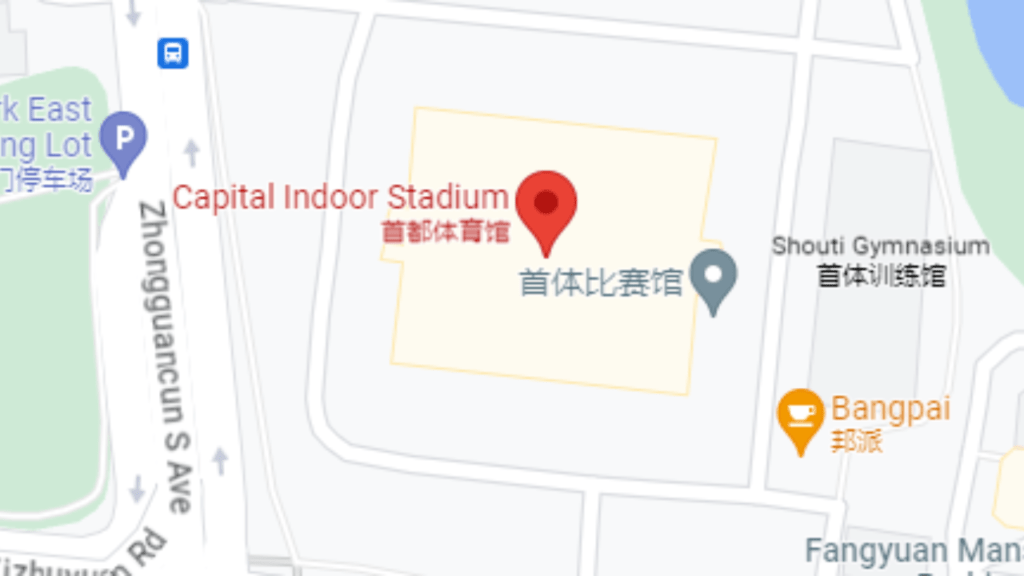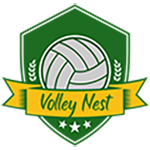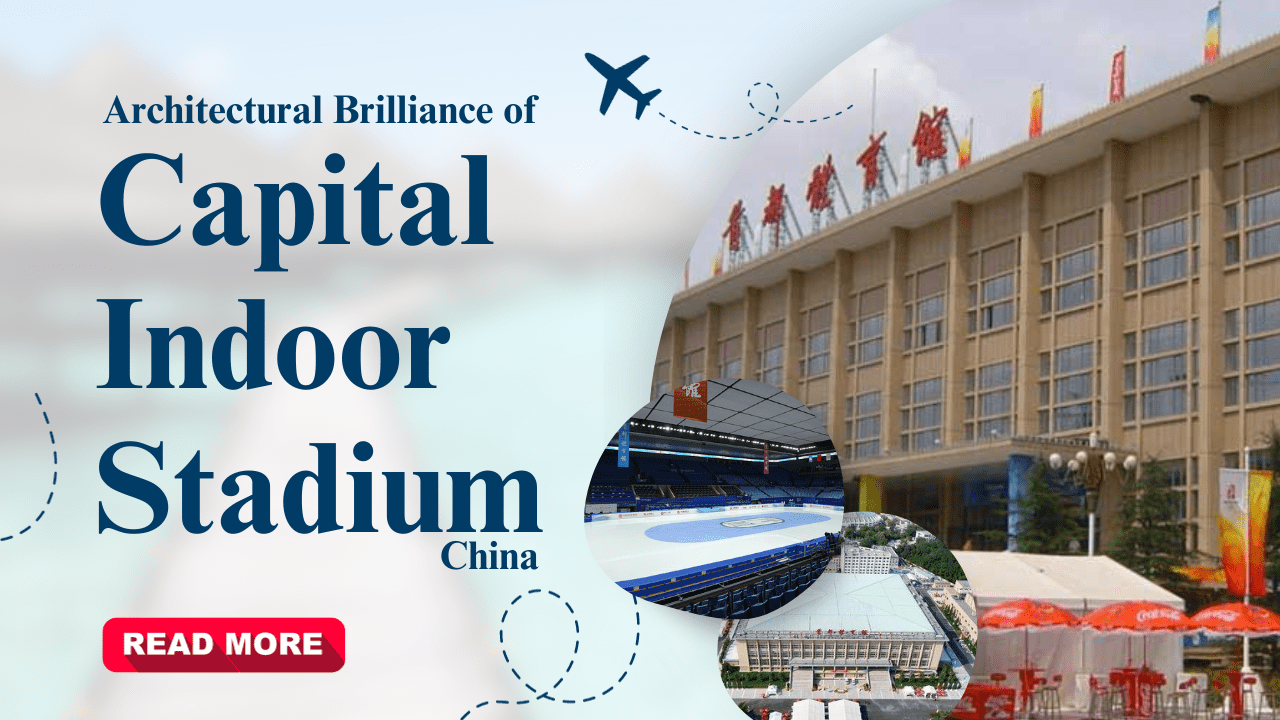Ancient architecture is a trademark of China. You can find a number of wonderful places and structures in China, from the Shanghai World Financial Center to the Mogao Grottoes. Although there are so many captivating architects there, let’s talk about Capital Indoor Stadium. The stadium has hosted a number of international tournaments. Visitors can attend a game or match and experience the excitement of live sports.
Take a look at its insights and learn more about them.
History
To get started, the stadium was first renovated between 2000 and 2001. The venue was upgraded in preparation for the 2001 Summer Universiade. From the old 53,000 square meters, it has increased its floor space to 54,707 square meters with a capacity of 17,345 people.
In late 2007, Capital Indoor Stadium was renovated and expanded for the 2008 Summer Olympics, where volleyball tournaments were held.
Major events hosted at Capital Indoor Stadium
The Capital Indoor Stadium in Beijing, China has hosted a variety of major events throughout its history. Here are some of the major events hosted at the stadium:
- Ping Pong Diplomacy: The Capital Indoor Stadium gained fame for hosting the 1971 matches between the national table tennis teams of China and the United States, part of the ping pong diplomacy exchange program.
- NBA Game: The stadium hosted one of the first NBA games in China on October 17, 2004, in front of a sellout capacity of 17,903.
- Arena Football Game: All-stars from the Arena Football League played at the stadium to promote the new AFL China league (now the China Arena Football League).
- 2008 Summer Olympics: As part of the 2008 Summer Olympics, the Capital Indoor Stadium was renovated and expanded.
- Figure Skating: The Capital Indoor Stadium will host figure skating at the 2022 Winter Games.
- Other Sporting Events: The stadium has hosted a variety of other sporting events, including badminton, basketball, volleyball, table tennis, gymnastics, and ice hockey.
Overall, the Capital Indoor Stadium is a versatile venue that has hosted numerous sporting events, including ping pong diplomacy, NBA games, arena football games, the 2008 Summer Olympics, figure skating, and other competitions.
Facilities and Amenities
The vast stadium in Beijing, China is a comprehensive and multi-functional gymnasium that offers a range of facilities and amenities for visitors. Here are some of the facilities and amenities available at the stadium:
- Seating capacity: The stadium can seat up to 18,000 people.
- Floor space: The stadium has a floor space of 54,707 square meters.
- Sports facilities: The Capital Indoor Stadium is primarily used for sports events and competitions, and it offers a range of sports facilities, including a volleyball court, basketball court, table tennis tables, badminton courts, gymnastics equipment, and an ice skating rink.
- Parking: The stadium has a multi-story parking garage that can accommodate a large number of vehicles.
- Sound system: Clear and powerful audio is provided by the stadium’s high-quality sound system.
- Lighting system: Different events and activities can be accommodated by the stadium’s modern lighting system.
- Scoreboards: The stadium has large and modern scoreboards that display scores and other information during events.
- Locker rooms: Athletic and performance facilities at the stadium have been renovated.
- Concession stands: Visitors can purchase food and beverages at the stadium’s concession stands.
- Cultural events: In addition to sports events, the Capital Indoor Stadium also hosts cultural events, such as concerts, exhibitions, and festivals.
Overall, the Capital Indoor Stadium offers a range of facilities and amenities for visitors, including sports facilities, parking, sound and lighting systems, scoreboards, locker rooms, concession stands, and cultural events.
Location
The Capital Indoor Stadium is located in Beijing, China, specifically at 56 Zhongguancun South Street in the Haidian District. The stadium is easily accessible by public transport, with the Baishiqiao Road metro station located nearby. It is also close to the Baishi Bridge and the Olympic Sports Center Stadium. The exact address of the stadium is 56 Zhongguancun South Street, Haidian District, Beijing, China.

How to get there
- By metro: Take metro line 4 to the National Library Station, Exit C, and walk south for about 250 yards to reach the stadium.
- By bus: The stadium is a 4-minute walk from the Baishiqiao Nan (S) bus stop.
- By taxi: Taxis are available to transport visitors to the Capital Indoor Stadium. Taxis are readily available throughout the city.
- From Beijing Capital Airport: Visitors can take the Airport Express train to Sanyuanqiao Station, transfer to Metro Line 10 to Haidian Huangzhuang Station, and then transfer to Metro Line 4 to National Library Station, Exit C, and walk south for about 250 yards to reach the stadium
Hotels Near Capital Indoor Stadium
I found several hotels near the Capital Indoor Stadium in Beijing, China:
- Crowne Plaza Beijing Zhongguancun: High-end rooms & suites with free Wi-Fi, plus 2 eateries, an indoor pool & a fitness center. 4-star hotel for USD 463.47 per night.
- Mercure Beijing Zhongguancun (Opening January 2020): 4-star hotel with a rating of 5.
- Lavande Hotel Zhongguancun Renmin University: 4-star hotel for USD 250.19 per night.
- 7 Days Premiuma Beijing Zhongguancun People S Univ: USD 154.07 per night.
- IU Hotel Beijing Zhongguancun Zhichunli: 2-star hotel for USD 178.34 per night.
Stadium’s Future
Capital Indoor Stadium in Beijing, China has a bright future as a versatile and multi-functional venue. Here are some of the future plans and developments for the stadium:
- Double-duty ice sports center: As the oldest of all Beijing 2022 venues, the Capital Indoor Stadium has transformed into a double-duty ice sports center following a facelift. The stadium will host the figure skating and short-track speed skating competitions during the 2022 Winter Olympics.
- Test events for Beijing 2022: The stadium has undergone test events for the 2022 Winter Olympics, receiving 280 athletes from nearly 40 countries and regions.
- Sustainable format: The venue will maintain its Olympics legacy and sustainable format by continuing to serve a variety of purposes, including hosting sports competitions, athlete training, and cultural events.
- Other sports competitions: The Capital Indoor Stadium has functioned as a multipurpose arena, hosting sports and various activities, including volleyball for the 2008 Beijing Olympics and ice hockey.
Which Sports Are Played There
The Capital Indoor Stadium in Beijing, China is a versatile venue that hosts a range of sports and cultural events. Here are some of the sports that are played at the stadium:
- Volleyball: The Capital Indoor Stadium served as the venue for volleyball tournaments in the 2008 Summer Olympics and has been used for additional volleyball competitions since then.
- Basketball: The stadium hosted one of China’s first NBA games in 2004 and has continued to be a venue for other basketball events.
- Table Tennis: In 1971, the stadium hosted ping pong diplomacy matches between the national table tennis teams of China and the United States.
- Football: AFL China all-stars played in the stadium for the first-ever professional football game to promote the new league (now known as the China Arena Football League).
- Badminton: Competitions in badminton can be held in the stadium.
- Figure Skating and Short Track Speed Skating: During the 2022 Winter Olympics, the Capital Indoor Stadium hosted figure skating and short track speed skating competitions.
Overall, the Capital Indoor Stadium is a versatile venue that has hosted a range of sports events, including volleyball, basketball, table tennis, football, badminton, and figure skating and short track speed skating.
The Capital Indoor Stadium in Beijing, China, is not only a testament to world-class sportsmanship but also an architectural marvel. Hosting numerous international events, including the Olympics, its state-of-the-art facilities make it a beacon for athletes worldwide. Yet, it’s the stadium’s iconic design that truly captivates visitors. Seamlessly blending modern engineering with traditional Chinese aesthetics, the Capital Indoor Stadium stands as a symbol of China’s rich heritage meeting its dynamic future. Every event here is not just a game but a celebration in an arena that reflects Beijing’s heart and soul.
FAQs
The Capital Indoor Stadium is located in Beijing, China. Since its completion in 1968, it has been a major sporting venue in China, steeped in history. It played a prominent role during the 2008 Beijing Olympics and has hosted various other international sporting events.
During the 2008 Beijing Olympics, the Capital Indoor Stadium was a primary venue for hosting the volleyball competitions. The Capital Indoor Stadium’s role in the Olympics is particularly notable due to its extensive renovations. These updates were necessary to meet international standards for the games.
The Capital Indoor Stadium primarily hosts sports events. Additionally, it serves as a multifunctional venue for cultural events, concerts, exhibitions, and entertainment shows. This versatility establishes it as a prominent event space in Beijing.
Following the renovations for the 2008 Olympics, the Capital Indoor Stadium now has a seating capacity for approximately 17,000 spectators. This expansion makes it one of the larger indoor venues in Beijing.
The Capital Indoor Stadium, originally built in the 1960s, reflects the architectural style of that era. The renovations leading up to the 2008 Beijing Olympics introduced modern design elements and improved infrastructure. These updates, alongside state-of-the-art facilities, created a fusion of historical and contemporary architecture.




